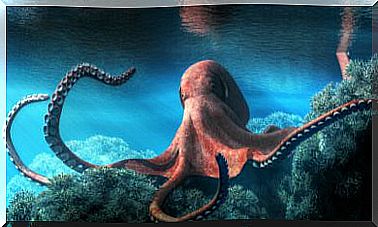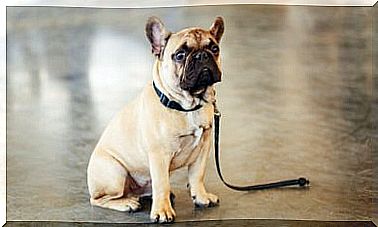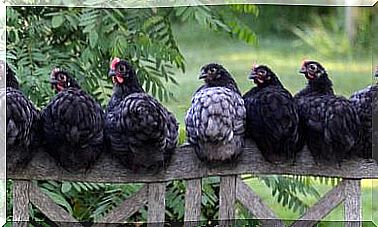The Vietnamese Pig As A Pet
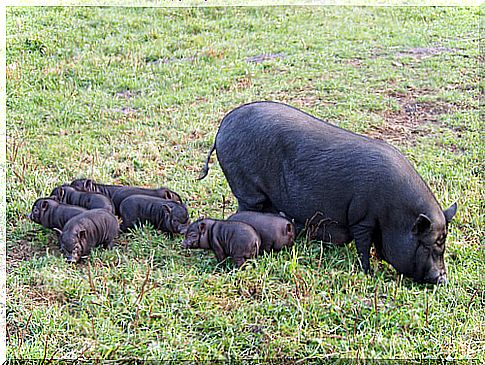
Currently, there is a lot of talk about having a Vietnamese pig as a pet. However, this little animal has been attracting attention since the 1980s.
This dwarf pig breed native to Vietnam farms can live from 12 to 20 years. Its main difference in relation to other races is its peculiar physiognomy and diminutive size, in addition to its black coloration.
While a common pig can weigh more than 300 kilos, the Vietnamese usually weigh between 40 and 80 kilos. Already the size of his body varies between 40 and 50 centimeters.
However, piglets also need care with their hygiene, nutrition and physical conditioning to develop healthy. In addition, they do not require as much time from their owners and are very intelligent.
Here we summarize the main advantages of adopting a Vietnamese pig as a pet and the tips for raising it.
Why have a Vietnamese pig as a pet?
We know that cats and dogs are at the top of the ranking of most loved pets. But various more exotic animals are equally capable of filling the home with joy and faithfully accompanying their owners.
We summarize the advantages of adopting a Vietnamese pig as a pet.
Docile and curious character
These little animals are much more than just their funny face. His character is docile, curious and energetic. They are very rarely aggressive. When encouraged, they are willing to play, run, and discover new activities. Therefore, a Vietnamese pig as a pet can be the ideal companion for developing children.
These animals are very expressive and capable of interacting, establishing a deep emotional relationship with their owners. They ask for pampering, propose joint exercises and enjoy being in the company of humans and other pets.
Training capacity
Many people are ignorant, but pigs are very intelligent animals that tend to learn easily. With proper guidance, they can be trained just like cats and dogs. They are even capable of answering by name and walking the streets normally.
Many domestic pigs learn to relieve themselves in the proper place. They are also capable of memorizing and playing tricks, as well as answering commands.
Clean and with little hairs
Although our prejudice says otherwise, pigs are very hygienic animals that do not like to live in dirty environments. Like almost all mammals, they have hairs, but very few if compared to dogs and cats.
Another interesting detail is that they can be responsible for much of their body cleaning themselves.
Basic tips for taking care of a Vietnamese pig as a pet
When you remove a wild animal from its natural habitat, you need to pay close attention. Favorable conditions must be provided for their healthy development.
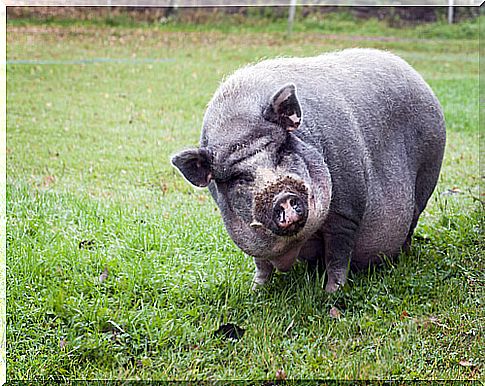
The Vietnamese pig as a pet will need its owner to offer good nutrition, regular hygiene and regular exercises.
-
Balanced diet
Vietnamese pigs are omnivores and adapt to various types of food. So much so that they are usually very gluttonous. But your daily diet should be rich in fruits and vegetables (about 70%). And like all mammals, they need plenty of fresh, clean water to stay hydrated.
Vietnamese pigs should not be fed commercial ordinary pig feed. This product is designed to make these animals fat, not to nourish them. By feeding on such feed, the animal can quickly become overweight.
Appropriate commercial feeds for domestic dwarf pigs are available in the United States. The proportions are adequate to keep your weight balanced. However, it is still difficult to find these products in Europe.
There are some cereal compounds that can be adapted as the basis of the pig’s diet. But the best option is usually a homemade nutrition according to the recommendations of the specialized veterinarian.
-
Hygiene and conditioning of the environment
As we can see, Vietnamese pigs are clean and do not give off a bad smell from their body. On the contrary, it is the lack of cleanliness of the environment that dirties the animal and leaves it with an ugly smell.
This is why keeping your Vietnamese pig clean is easy when you provide a hygienic environment. It is also recommended to bathe it for 2 to 2 months to improve the health of its skin and hair, especially in summer.
As they originate from a temperate zone, the optimum temperature for their development varies between 19º and 25ºC. They are vulnerable to extreme heat and cold, so you have to be careful with the air conditioning of the environment.
-
Physical exercises and health care
In their natural habitat, these animals are used to walking freely on farms and they mate quite frequently. Which means high energy expenditure. A Vietnamese pig as a pet will need physical exercises and free space to maintain its weight.
By providing them with a good diet and exercise, they do not ask for much more care with their health. However, it is necessary to vaccinate them periodically just like dogs and cats.

